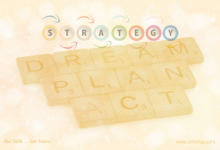
Effective Organizational Conflict Management Makes Organizations More Stable And Productive
Organizational conflict is a misunderstanding or disagreement caused by perceived or actual opposition in needs, interests, and values among people working together. Organizational conflict can also be described as workplace conflict. Where conflicts occur during situations where there is interaction between two or more members of an organization involving contradictory opinions. In simpler terms, organizational conflict refers to the outcome of human interaction that begins with a member declaring. That their values, attitudes, or goals are incompatible with the organization’s attitudes, values, or goals and must be followed by its members. Thus, conflicts can be as varied as jealousy, rivalries, personal clashes, struggles for favoritism, power, and division of roles, leading individual employees to respond differently to various challenging situations that arise at work. Therefore, effective organizational conflict management that makes organizations more stable and productive must be strengthened and consolidated.
Causes Of Organizational Conflict
1. Communication
One of the most critical issues in organizational conflicts is poor or miscommunication. Sometimes the conflict arises from a small unintended communication problem. Like missing emails or dealing with people who don’t answer phone calls. In addition, giving feedback is also a situation where good intentions can quickly escalate into conflict. So when communicating, please focus on the behavior and its effects, not the person. Thus, poor or lack of proper communication can lead to conflict within the organization. Negatively affecting the productivity of the entire work team.
2. Organizational Structure
The organizational structure plays a vital role in taking different forms of conflict. The state of the organizational structure often leads to conflict regarding decisions. Because sometimes the structure specifies that each manager reports to two bosses. Thus this type of organizational structure will always lead to confusion dividing the organization into smaller parts. And they always have two opinions on one issue.
3. The relationship between authority and responsibility
The design of power in the organizational structure determines the chances of conflict arising. Note that the existence of an undefined or explicit relationship between authority and responsibility will inevitably lead to conflict. So when the authority and responsibility relationships are appropriately defined or clearly. It will lead to consistency in work, leading to organizational conflict.
4. Personal differences
Differences in personality in the workplace are common and to be expected. As employees work from different ethnic and cultural backgrounds and have different experiences and mindsets. Making for a unique personality for each of them to understand. By understanding some of the fundamental differences between how people think and act, we can better understand the perspective and views of others, and it allows us to anticipate and mitigate interpersonal conflict.
5. Frustration and stress
Conflict arises when the parties involved are highly stressed or frustrated with their work, leading to lower productivity overall. The causes of this stress can be as simple as unwanted noise, lack of privacy, an untidy workplace, or as severe as threats of violence, harassment, and harsh negative criticism.
6. Competition for resources
Limitation and scarcity of resources such as money, time, and equipment, leading to competition between individuals or departments for these resources, which is a frequent cause of conflict. Note that this unhealthy competition can lead to a hostile environment in the organization and, thus, lower morale in the workplace. Since essential resources are often limited and a source of organizational conflict, many organizations have to live with them and manage them effectively.
7. Interdependent missions
One cause of conflict is task interdependence; task interdependence, when carrying out a particular task, requires dependence on others to perform their functions. Situations where completing one’s task involves other co-workers performing their tasks as equals or conflicts concerning the competence or sincerity of the co-workers are usually seen. Knowing that the lack of efficiency in one sector leads to the disruption of the entire workflow and the emergence of conflicts.
8. Incompatible goals
Often, incompatible goals arise because of the different ways in which department managers are compensated. For an organization to function effectively and well, it needs employees who work hard and correctly to understand their individual goals. Thus conflict sometimes arises when two parties believe their objectives are mutually exclusive and incompatible.
9. Differences in culture and values
Sometimes there is a particular age gap between the employees in the workplace. Knowing that values have changed over time due to society’s progress, society has become more open and accepting of many new reforms that may not always be compatible with older generations. The difference in values is not always a harbinger of conflicts, but arrogance in not accepting such change indicates a conflict.
Organizational Conflict Management Methods
Effective organizational conflict management refers to the ability to identify and deal with conflicts judiciously, reasonably, and efficiently, which creates an opportunity to strengthen relationships and improve situations. Organizational conflict management techniques can be categorized into three groups:
First: Common goals
It is necessary to find common ground between the conflicting groups, find goals agreed upon by the parties to the conflict, and open communication channels between them.
Second: Structural methods
- Referring the conflict to a specialist or consultant who deals with the conflict by defining the responsibilities of the conflicting parties.
- Reducing the degree of dependence between groups and making them self-reliant
- Staff exchange, as the transfer of staff from one unit to another increases their understanding and gives them new experiences
- Finding coordinating positions between the units and divisions of the organization
Third: Administrative, behavioral, and legal methods
- The use of force or authority or both to resolve the conflict. Where one of the parties tries to resolve the conflict through aggressive behavior, power, or official influence.
- Softening or calming the conflict by consoling the parties to the conflict to calm them down
- Passively ignore conflict instead of resolving it, and remain neutral to avoid conflict altogether
- Conciliation and settlement between the parties to the conflict through using human skills to influence them. In this situation, a win-win scenario is created, thus satisfying both parties involved in the conflict.
- Confrontation and domination, where a more submissive approach is adopted through domination. And control of one of the parties to the conflict.
Effective organizational conflict management makes business organizations more stable and productive. Achieving this requires good interpersonal skills, self-awareness, emotional intelligence, confidence, and effective communication.



